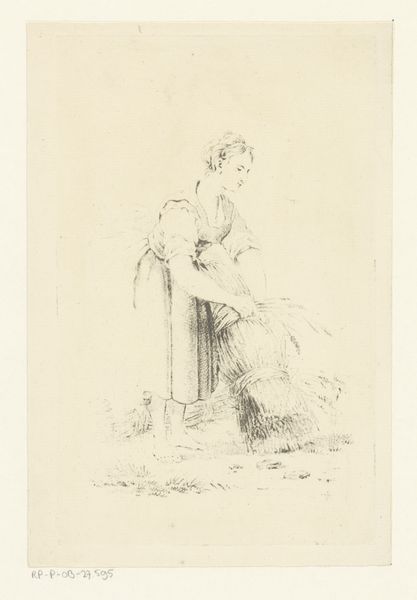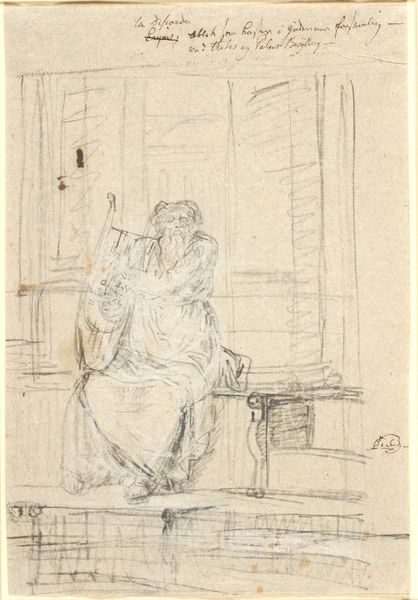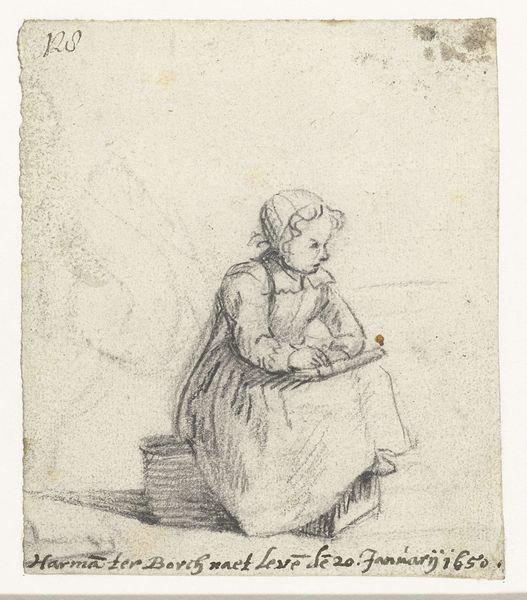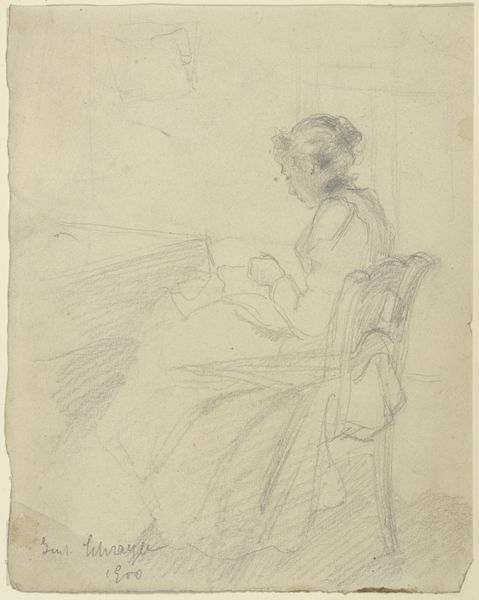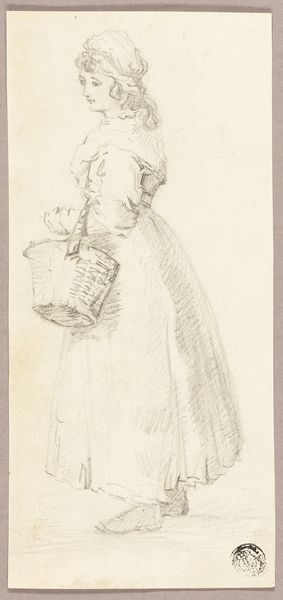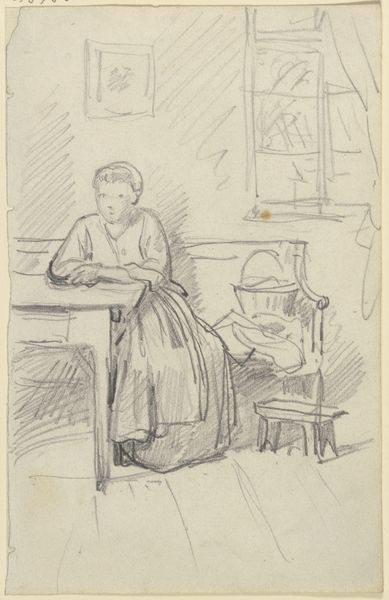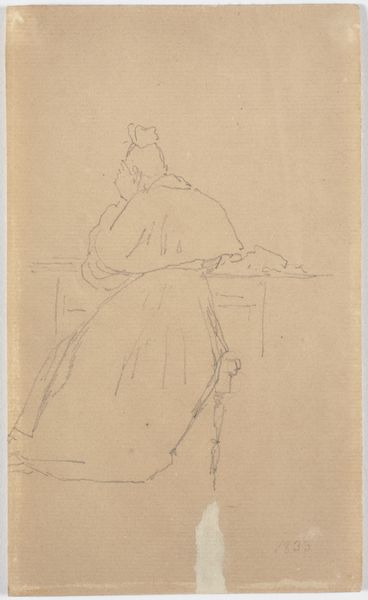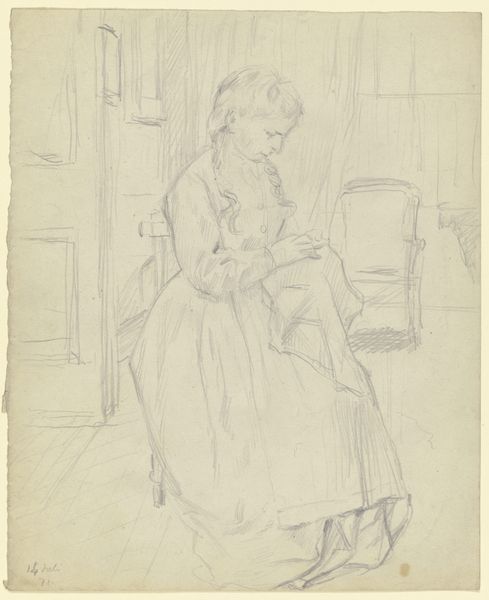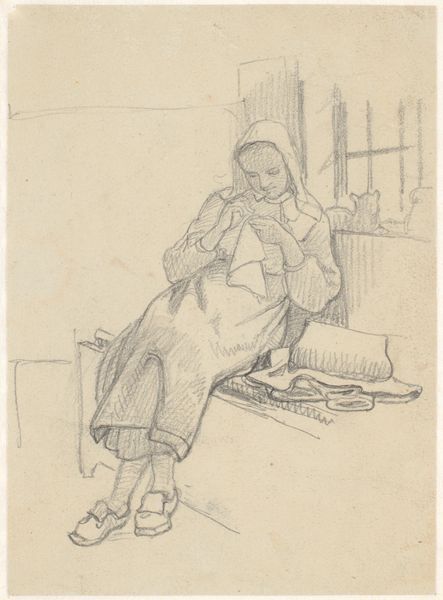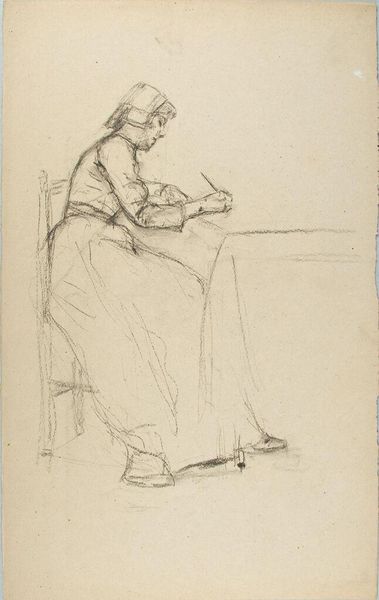
drawing, print, paper, pencil, graphite
#
portrait
#
drawing
# print
#
pencil sketch
#
landscape
#
figuration
#
paper
#
pencil
#
graphite
#
genre-painting
#
realism
Dimensions: 171 × 128 mm
Copyright: Public Domain
Curator: Here we have a drawing entitled "Woman Washing Clothes" by George Morland, undated, a graphite drawing rendered on paper. What is your initial reaction? Editor: Bleak. It speaks to the raw realities of labour, showing the repetitive, physically demanding nature of work largely shouldered by women. It's so plainly rendered it avoids romanticizing hardship. Curator: Exactly. Morland situates the figure within a narrative reflecting on the role of women in society. The woman's engagement with washing the laundry becomes emblematic of larger socio-economic forces at play, especially around domestic duties and gendered expectations. Editor: Absolutely, the worn wooden tub and rudimentary stool speaks volumes about the scarcity and limitations inherent in this labor. How was the original image produced? Was it quickly sketched from life or did it start as a more deliberate work? Curator: The pencil technique has a loose, informal feeling that is quite typical of his study drawings, intended as preparatory for larger works. But this seeming casualness underscores the systemic burdens women carried, right? They were not free to leave, trapped into roles like motherhood and wives in servitude. Editor: And what about that child by her mother's foot? Is there something the labor itself represents besides the actual making of clothes? Perhaps the way labor creates other responsibilities and relationships of family care. Curator: It is about unpaid labour too, how she is providing sustenance through this domestic drudgery. She also represents vulnerability and the cyclical nature of poverty for so many at the time. Editor: Yes, but at the same time, I'm struck by how even the line quality itself speaks to the work involved. The delicate graphite is worked back into repeatedly. It emphasizes this piece not as observation, but labor. Curator: So, for you, it’s less about the social commentary and more about the material experience? Editor: Both. The artwork acts as a bridge connecting lived experience to tangible production. Curator: Indeed, analyzing art's cultural and social contexts makes us critically rethink systems of gender inequality then and now. Editor: For me, it allows us to respect the inherent, complex materiality of labor, pushing beyond its simple economic definitions.
Comments
No comments
Be the first to comment and join the conversation on the ultimate creative platform.
